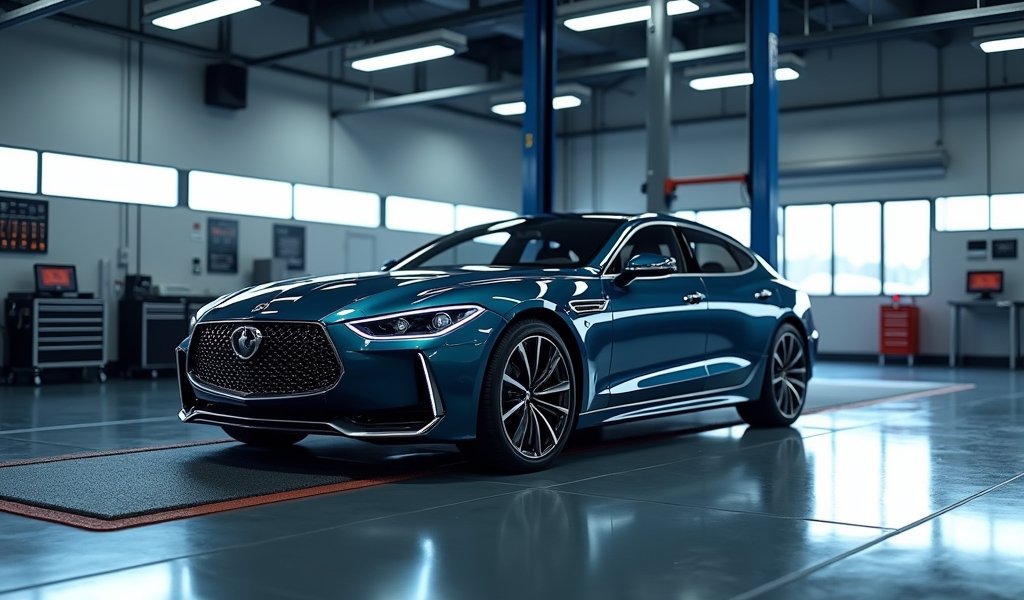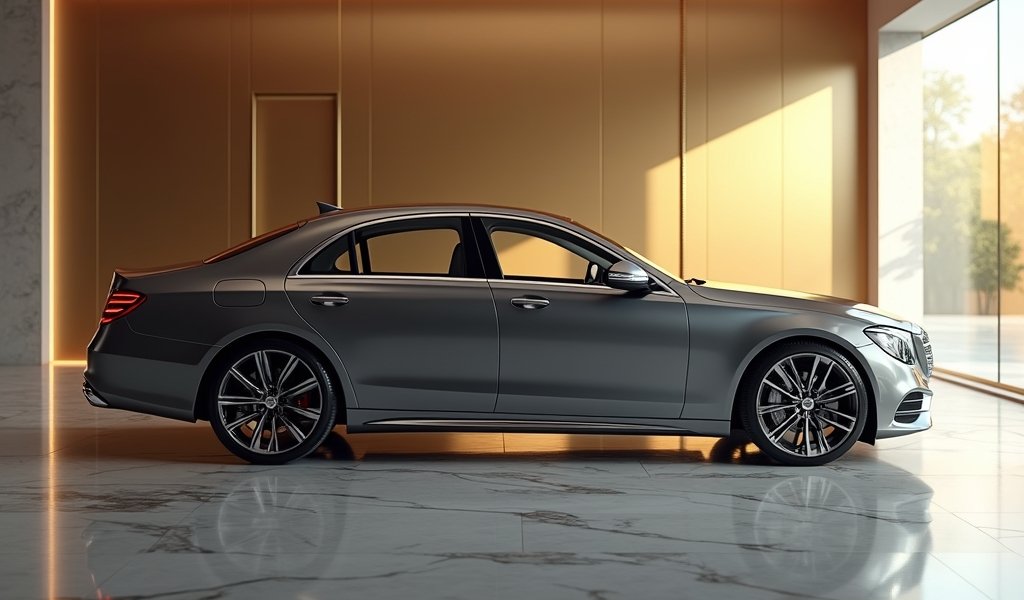Overview
This article provides five expert tips for maximizing value when leasing luxury vehicles: timing your lease for seasonal savings, understanding hidden costs beyond monthly payments, negotiating effectively by focusing on capitalized cost, carefully calculating mileage needs, and planning strategically for lease-end to avoid penalties. The guidance emphasizes that successful luxury leasing requires research, proactive planning, and strategic thinking rather than unlimited financial resources.
Table of Contents
- Understanding Luxury Car Leasing
- Pro Tip 1: Timing Your Luxury Lease for Maximum Savings
- Pro Tip 2: Understanding the True Cost of Luxury Leases
- Pro Tip 3: Negotiating Like a Professional
- Pro Tip 4: Mileage Considerations for Luxury Vehicles
- Pro Tip 5: End-of-Lease Strategies That Save Money
- Conclusion
- Frequently Asked Questions
Understanding Luxury Car Leasing
Luxury car lease specials offer an enticing pathway to experiencing premium automotive engineering without the commitment of ownership. As someone who’s spent decades under the hoods of everything from Bentleys to Teslas, I can tell you that leasing a luxury vehicle comes with unique advantages that traditional financing doesn’t offer. The opportunity to drive the latest models with cutting-edge technology every few years is particularly appealing for automotive enthusiasts.
The luxury car market operates differently than the general automotive sector. Manufacturers like BMW, Mercedes, and Lexus regularly offer special lease incentives to move inventory and maintain market position. These incentives can translate to significant savings if you know how to identify and leverage them effectively.
The depreciation factor makes leasing particularly attractive for luxury vehicles. High-end cars typically lose value more rapidly in their first few years, and leasing allows you to sidestep this financial hit. You’re essentially paying for the depreciation during your lease term rather than absorbing the full impact of ownership.
Before diving into the world of luxury leases, it’s crucial to understand that not all specials are created equal. Some advertised deals may require excellent credit scores or substantial down payments that aren’t mentioned in the splashy marketing. Let’s explore how to navigate these waters like a pro.
Pro Tip 1: Timing Your Luxury Lease for Maximum Savings
Timing can make a difference of thousands of dollars when leasing a luxury vehicle. The automotive industry operates on cycles, and understanding these patterns gives you a significant advantage in securing the best luxury car lease specials.
End-of-month opportunities often yield the best deals. Dealerships and sales representatives typically have monthly quotas to meet, making them more flexible on terms as the month comes to a close. This urgency intensifies even further at the end of each quarter (March, June, September, and December), when manufacturer incentives are often at their peak.
Model year transitions represent another golden opportunity. When next year’s models begin arriving at dealerships, current year models become prime candidates for aggressive lease specials. This typically occurs in the late summer through fall months, though it varies by manufacturer.
According to Edmunds’ lease analysis, holiday weekends also bring special promotions, with Memorial Day, Labor Day, and year-end holidays offering particularly good opportunities. Manufacturers often provide additional incentive money during these periods to help dealers create appealing offers.
Beyond these predictable cycles, watch for specific events that might trigger special lease offers:
- New model introductions (creating urgency to move outgoing models)
- Slower-than-expected sales periods
- Competitive responses to other luxury brands’ promotions
To leverage these timing opportunities, begin your research about 60 days before you plan to lease. This gives you time to monitor the market, identify emerging specials, and position yourself to act when optimal conditions align. Remember, patience often translates directly to savings in the luxury leasing world.

Pro Tip 2: Understanding the True Cost of Luxury Leases
Looking beyond the advertised monthly payment is essential when evaluating luxury car lease specials. The eye-catching figures in advertisements often mask the true cost of the lease arrangement. As a professional who’s analyzed hundreds of lease contracts, I’ve seen countless customers focus exclusively on monthly payments while missing substantial hidden costs.
The money factor (similar to an interest rate) dramatically affects your overall lease cost. This figure is typically presented as a small decimal (like 0.00125) and can be converted to an approximate interest percentage by multiplying by 2400. For context, excellent credit might qualify you for a money factor equivalent to 3-4% interest, while average credit might mean 6-8% or higher.
Residual value—the projected worth of the vehicle at lease end—is equally critical. Higher residual percentages (typically around 55-65% for luxury vehicles on a 36-month lease) mean lower monthly payments since you’re financing less depreciation. Manufacturers sometimes artificially inflate residual values on specific models they want to promote, creating genuine special opportunities.
When comparing lease specials, calculate the total lease cost using this formula:
- Down payment + (monthly payment × lease term) + acquisition fee + disposition fee + any other charges
Watch carefully for these often-overlooked costs that can significantly increase your overall expense:
- Acquisition fees ($595-$995 typically)
- Documentation fees (varies by dealer)
- Security deposits (sometimes waivable in special promotions)
- Disposition fees ($350-$500 when returning the vehicle)
- Gap insurance (sometimes included in luxury leases, sometimes not)
Consider the down payment carefully—while larger down payments reduce monthly payments, they also increase your risk if the vehicle is totaled or stolen early in the lease. Unlike financing, where your equity builds with each payment, lease down payments are effectively prepaid depreciation.
Lease specials that waive acquisition fees or reduce money factors often provide better value than those simply advertising low monthly payments with substantial down payments. Taking time to calculate the total cost allows for meaningful comparisons between different luxury lease specials.
Pro Tip 3: Negotiating Like a Professional
Negotiating a luxury lease requires a different approach than haggling over a purchase price. Even when pursuing advertised luxury car lease specials, significant room for improvement often exists. The key is understanding which components of the lease are negotiable.
The capitalized cost (essentially the selling price of the vehicle) remains fully negotiable, even in special lease offers. Many consumers mistakenly assume the vehicle price is fixed when pursuing a lease special. In reality, reducing the capitalized cost by $3,000 could lower your monthly payment by approximately $83 on a 36-month lease.
Before beginning negotiations, research the Kelley Blue Book value and competitive dealer pricing for your target vehicle. Knowledge of the dealer’s approximate cost basis gives you considerable leverage. Aim for 4-6% over dealer invoice as a reasonable target on most luxury models, even when special lease programs are offered.
When negotiating, consider these professional techniques:
- Negotiate the capitalized cost first, before mentioning you plan to lease
- Request the money factor be reduced if your credit score is excellent
- Ask for acquisition fees to be waived or reduced (especially at high-volume dealers)
- Inquire about available manufacturer incentives not initially disclosed
- Consider multiple security deposits (MSDs) which can lower money factors substantially on some luxury leases
Effective negotiation often involves leveraging competitive offers. Don’t hesitate to explore car lease takeover websites to understand current market rates and potentially use these as bargaining chips with dealers. Having documented offers from competing dealers for the same model creates powerful negotiating leverage.
Remember that dealerships evaluate profitability across departments. If you’re firm on the vehicle price but flexible on where you service your vehicle, you may secure better terms by committing to maintenance at the leasing dealership. This holistic approach often yields better overall results than focusing exclusively on monthly payment.
Pro Tip 4: Mileage Considerations for Luxury Vehicles
Mileage allowances represent a critical yet often overlooked aspect of luxury car lease specials. The standard 10,000-12,000 mile annual allowance included in most advertised specials frequently proves insufficient for many drivers. As a mechanical professional who’s seen the consequences of mileage miscalculations, I urge you to carefully assess your actual driving needs.
Understanding your true mileage requirements starts with honest accounting. Review your driving patterns by checking service records, annual inspections, or your vehicle’s trip computer. Remember to include occasional long trips, not just daily commuting. Most drivers underestimate their annual mileage by 10-15% when relying on memory alone.
Luxury vehicles typically carry higher excess mileage penalties than mainstream models. While a Honda might charge $0.15-$0.20 per excess mile, premium brands often impose $0.25-$0.30 per mile, with ultra-luxury marques sometimes reaching $0.40-$0.50. On a vehicle driven just 5,000 miles over the allowance, this difference translates to a $1,000+ variance in end-of-lease costs.
When evaluating mileage limits on car leases, consider these strategic approaches:
- Purchase additional miles upfront (typically $0.10-$0.15 per mile) rather than paying the higher excess rate later
- Negotiate higher mileage allowances in exchange for slightly higher monthly payments
- Consider 24-month leases instead of 36-month terms if you drive substantial distances
- Evaluate high-mileage lease specials occasionally offered by manufacturers like BMW and Mercedes
Some luxury brands offer mileage pooling for households leasing multiple vehicles. This arrangement allows transferring unused miles from one vehicle to cover excess mileage on another—a valuable benefit for multi-vehicle families with varying usage patterns.
If your circumstances change mid-lease and you anticipate exceeding your mileage allowance, contact the leasing company proactively. Some will allow purchasing additional miles at the lower upfront rate even during the lease term, particularly if requested before reaching the original allowance.

Pro Tip 5: End-of-Lease Strategies That Save Money
Planning your end-of-lease strategy long before your contract expires can yield significant financial benefits when dealing with luxury car lease specials. As a professional who’s guided clients through hundreds of lease conclusions, I’ve seen how proactive planning prevents costly surprises.
Begin preparing approximately six months before your lease end date. This timeline allows sufficient opportunity to address excess wear, evaluate market conditions, and explore all available options. Luxury vehicles often have more stringent return standards than mainstream models, making early preparation especially important.
Request the lease-end inspection criteria from your leasing company and conduct a thorough personal assessment. Pay particular attention to:
- Wheel condition (curb rash is common and costly on luxury vehicles)
- Windshield and glass (even minor chips may require replacement)
- Upholstery (leather wear beyond “normal” can trigger charges)
- Paint condition (especially door edges and bumpers)
- Mechanical issues (warning lights or operational problems)
Consider independent repair of minor issues before the official lease inspection. Wheel refinishing, minor paint touch-ups, and small dent removal can often be completed for less than the charges assessed by the leasing company. According to J.D. Power research, consumers who proactively address wear items typically save 30-50% compared to accepting lease-end charges.
Evaluate your purchase option strategically. In certain market conditions (like those experienced during recent supply chain disruptions), the residual value stated in your lease contract may be significantly lower than the vehicle’s actual market value. In such cases, exercising your purchase option and then reselling the vehicle can yield substantial profit.
If you’re considering another luxury lease, timing is crucial. Begin exploring new lease specials 60-90 days before your current lease concludes. Manufacturers often offer “loyalty” incentives to keep you in their brand, and early planning allows you to leverage these offers effectively.
For those wishing to exit a lease early, investigate lease transfer options through specialized marketplaces. Depending on your remaining term and payment structure, transferring your lease might be substantially more economical than paying early termination fees, which can often exceed several thousand dollars on luxury vehicles.
Conclusion
Navigating luxury car lease specials requires more than just an appreciation for fine automobiles—it demands strategic thinking and insider knowledge. By mastering the timing of your lease, understanding the true cost structure, negotiating professionally, carefully managing mileage considerations, and planning for lease-end, you position yourself to enjoy premium driving experiences at optimized costs.
Remember that luxury lease specials present genuine opportunities when approached with proper preparation. The manufacturers’ need to maintain market share and move inventory creates leverage for informed consumers. Your willingness to research, negotiate confidently, and maintain flexibility regarding specific models or features will consistently yield the most favorable terms.
The most successful luxury lessees understand that the relationship doesn’t end when the contract is signed. Maintaining your vehicle meticulously, monitoring mileage thoughtfully, and planning proactively for lease conclusion all contribute to a positive financial outcome. These habits ensure you’ll be well-positioned to take advantage of future luxury car lease specials as you move from one premium driving experience to the next.
Whether you’re drawn to German engineering precision, Italian performance artistry, or American luxury innovation, these five pro tips provide the framework for maximizing value in the premium automotive segment. The road to luxury doesn’t necessarily require unlimited resources—just informed decisions and strategic planning.
Frequently Asked Questions
What credit score do I need for the best luxury car lease specials?
Most premium lease specials require a FICO score of 740 or higher to qualify for advertised terms. Some ultra-luxury brands may require scores above 760 for their most aggressive promotions.
Are zero-down luxury lease specials really a good deal?
Zero-down leases can be advantageous as they reduce your initial risk if the vehicle is totaled early in the lease term. However, they typically feature higher monthly payments and may include the acquisition fee in the monthly payment rather than truly eliminating upfront costs.
Can I negotiate maintenance inclusion in luxury lease specials?
Yes, maintenance inclusion is often negotiable, especially with German luxury brands. Many dealers have flexibility to include maintenance packages as a negotiating tool when the base terms are firm.
How early should I start shopping for my next lease before my current one ends?
Begin exploring options 2-3 months before your current lease ends. This timeline allows you to identify emerging specials and avoid potential gap coverage issues between leases.
Do luxury lease specials include gap insurance?
Many luxury lease contracts include gap coverage automatically, but this isn’t universal. Always verify this specific protection is included in writing before signing any lease agreement.


Pingback: Lease vs Buy a Car Calculator: Pro Tips - knowsyourcar.com
Pingback: Zero Down Car Lease Offers – 5 Pro Tips - knowsyourcar.com
Pingback: best car lease deals 2025: Top Care Tips - knowsyourcar.com